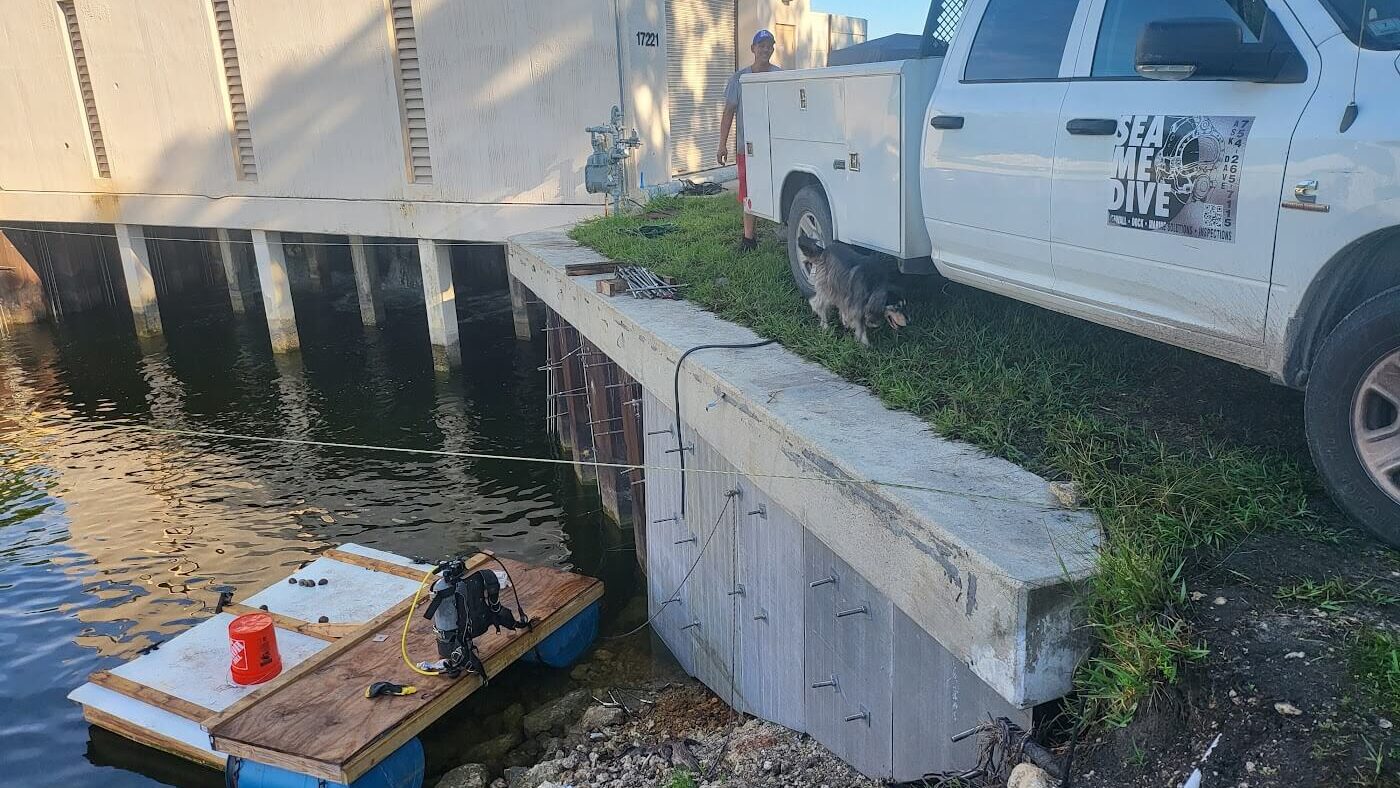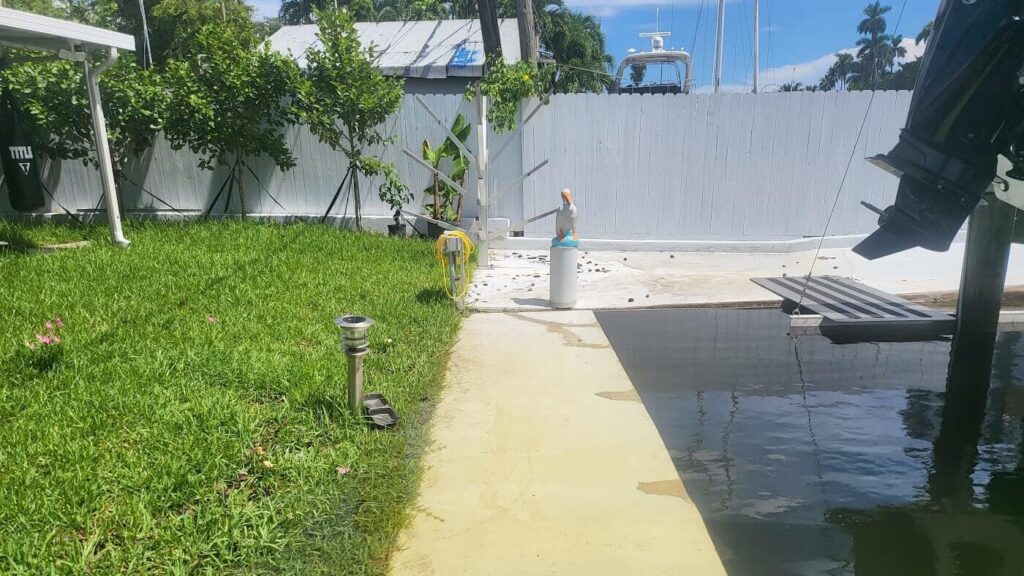Tidal activities, soil erosion, and improper drainage can lead to seawall leaks, which can cause flooding and even compromise the property’s stability. Detecting a leak early can save you from costly seawall repair in Florida and potential damage to your property. But how do you detect a leak in your seawall? Keep an eye on the signs and symptoms of a leak described below:
Signs and Symptoms of a Leaking Seawall
Recognizing the early signs of seawall leaks is essential for safety. Here are some key signs of a leak to watch for:
- Cracks in the Seawall
Visible cracks are often the most obvious sign of damage. While small cracks may not seem alarming, they can quickly grow due to pressure from water and shifting soil. - Soil Erosion or Loss
One major indicator of a leak is when the soil behind your seawall begins to erode or disappear. You might notice gaps or depressions forming in the ground close to the wall. It indicates that water is seeping through and washing away the soil. - Sinkholes or Settling Ground
If the ground around your seawall feels soft and uneven or is beginning to sink, this could mean that water has already undermined the foundation. These symptoms of a seawall leak indicate a serious problem that could lead to further collapse or major structural damage. - Water Pooling Behind the Seawall
Another tell-tale sign is water collecting behind the seawall after high tides or heavy rains. This suggests improper drainage or a hidden leak within the wall. - Rust Stains
Since seawalls are made of metal components, rust stains can signal structural weaknesses. Corrosion weakens the wall and makes it more prone to leaks. - Tidal Changes Affecting the Seawall
When tidal changes cause unusual shifts or stress on your seawall, this can suggest hidden leaks. Water might penetrate behind the wall, creating instability as tides rise and fall.

What Happens If You Ignore a Seawall Leak?
Ignoring the signs of a leaking seawall, even a minor one, can lead to catastrophic damage. Over time, the structural integrity of the wall will weaken, leading to more cracks, soil erosion, and possibly a total failure of the seawall. It puts your property at risk of flooding and erosion, which could be far more expensive to fix than addressing the initial leak.
What To Do When You Notice A Seawall Leak?
It can be concerning to detect a leak in your seawall, but taking the right steps quickly can help prevent bigger problems. Here’s what to do when you notice a seawall leak:
- Assess the Damage – Start by inspecting the area around the leak. Look for cracks, soil erosion, or unusual water seepage. This will give you a sense of the problem’s severity.
- Reduce Water Pressure – If possible, lower the water pressure behind the seawall to reduce the stress on the structure. This can help minimize further damage until repairs are made.
- Contact a Professional – Seawall repairs often require specialized knowledge. Call Sea Me Dive and allow us to assess the situation and provide a solution. DIY fixes might be tempting, but they often lead to more serious issues down the line.
- Consider Temporary Fixes – While waiting for a professional, you may use temporary solutions like sandbags or water diversion techniques to limit further damage.
- Plan for Regular Maintenance – To avoid future leaks, schedule regular inspections and maintenance of your seawall with Sea Me Dive. Keeping an eye on the structure can help detect a leak in your seawall early.
While some property owners may be tempted to tackle a minor seawall repair in Florida themselves, seawall leaks require specialized knowledge and tools to address them properly. Seawall repair in Florida, in particular, demands expertise because of the region’s specific environmental conditions. Sea Me Dive, with our over 20 years of experience in the region, have the tools and expertise to help you!
Experts help can:
- Assess and provide diagnosis accurately
- Provide long-lasting solutions
- Comply with local laws
- Use advanced tools and equipment to repair the seawall

FAQs
How often should I inspect my seawall for leaks?
It’s a good idea to inspect your seawall once a year, or every 2-3 years at most, especially after major storms or high tides. Regular inspections by Sea Me Dive help catch signs of leak seawall before they escalate.
Can small cracks in a seawall be repaired, or do I need a full replacement?
Small cracks can often be repaired if they are caught early. However, larger or expanding cracks may require more extensive repairs or even a partial replacement, depending on the severity. Sea Me Dive can identify the difference and generate repair solutions for your specific issues.
How much does it cost to repair a seawall leak?
The cost of a seawall repair in Florida varies depending on the size of the leak, the materials involved, and the extent of the damage. It’s best to get an estimate from a professional seawall repair service in Florida to know the exact cost. Call Sea Me Dive today! 754-265-7115
Conclusion
Regular inspections and attention to symptoms like cracks, soil erosion, and rust stains can help avoid costly repairs and calamities. If you detect a leak in your seawall, don’t wait; contact Sea Me Dive for a professional examination and experienced repair services.
Call us immediately to schedule an inspection and protect your property against seawall leaks!
